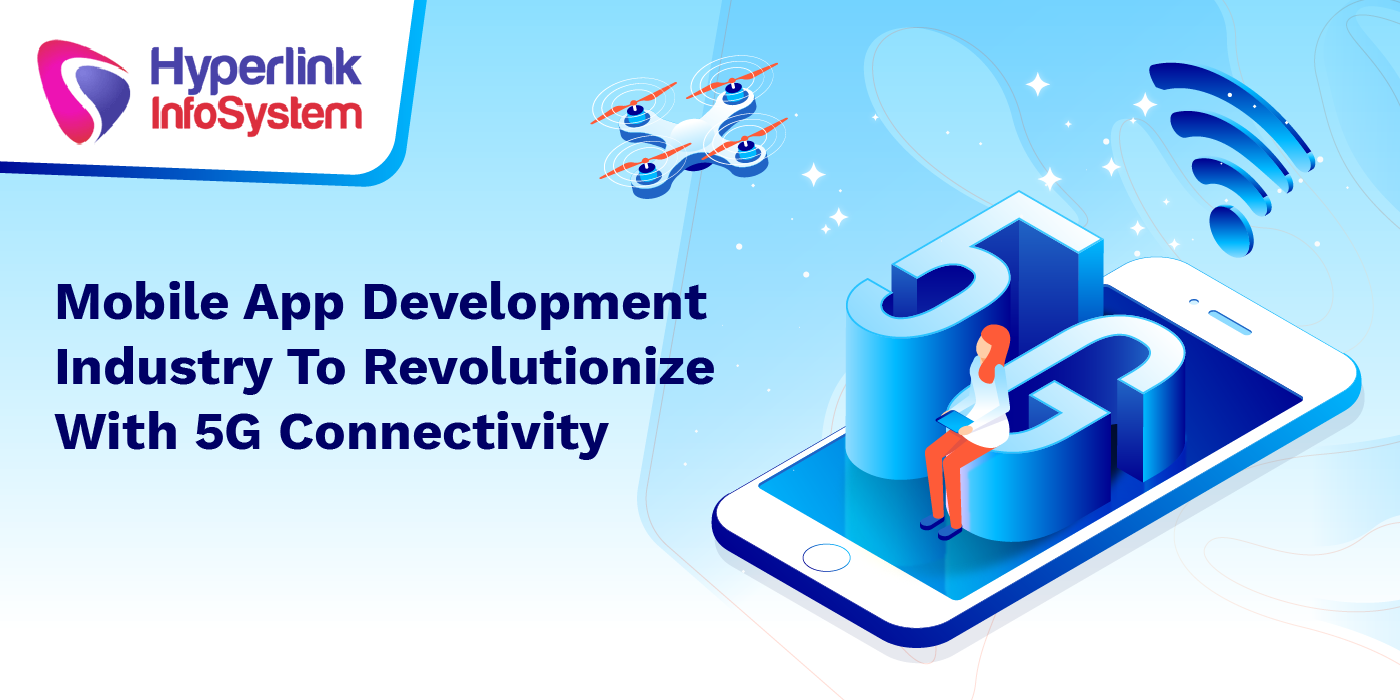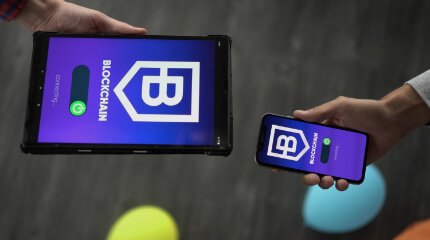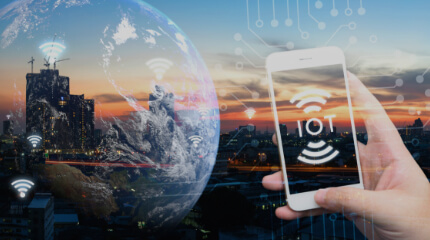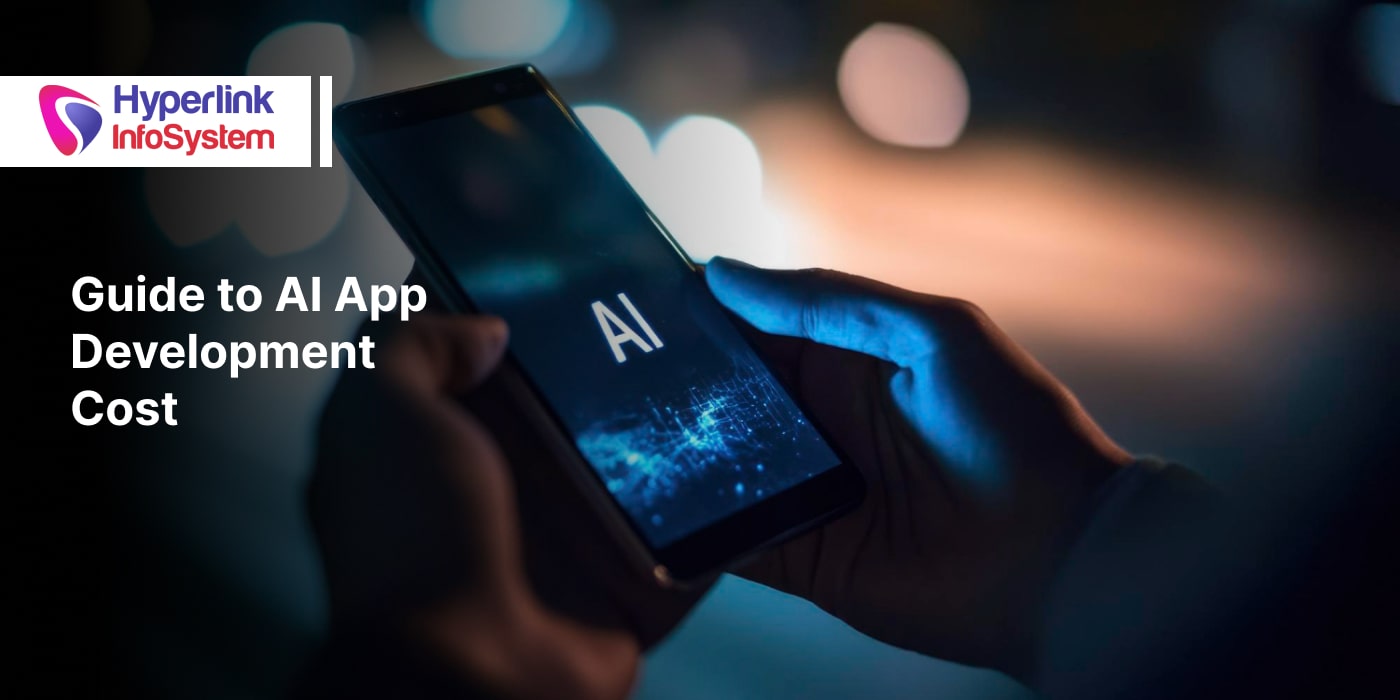We are not far from entering the era of the next technological revolution. The world moves at a fast pace with extensive connectivity, accessibility ease, continuous innovation, and velocity that has made everything easier for humans.
Until now, we were acquainted with the 4G networks, which offered us an outstanding experience. Internet users have become used to fast-internet connectivity, smooth and unbreakable video conferencing, High-definition video streaming, online gaming with 4G LTE.
The smartphone development companies and designers, along with telecom providers, are now looking forward to 5G connectivity. 5G technology is a blessing for mobile app development companies and plentiful end-users who can leverage this technology for their benefits.
This article will shed light on how fast it is 5G, how it works, and is better, its features, and its impact on the mobile app development industry.
First, let’s understand what 5G is.
The next modern and recent mobile broadband connection service 5G, refers to as “fifth-generation.”
5G is slowly replacing 4G LTE, and that will take place sooner. The upload and download speed has soared with 5G connectivity like never before. Like 4G replace 3G; similarly, 5G has established itself in this new technological setting and becomes the latest normal to replace 4G.
Currently, 5G is not the extended version of 4G, but has an entirely distinct network infrastructure. 5G can evolve the way smartphones and mobile apps function due to its extra features.
5G aims to improvise the current network connectivity and velocity. With the connectivity speed of around 10 GB per second, it empowers to improve the mobile phone experience for worldwide users by delivering fast information sharing. 5G connectivity offers ten times the speed of the 4G network. The fast-paced data transfer will entirely alter the way users communicate.
The working of 5G technology:
You must be wondering how this technology works so flawlessly. It involves the use of three spectrum bands for its proceeding.
Low-band Spectrum
The other name for this is the 1GHz spectrum. In the US, 1GHz connectivity is a primary band and is almost obsolete. When it comes to wall diffusion and covering vast areas, this spectrum the best bet. However, with regards to the data velocity, it can only deliver a maximum of 100Mbps speed.
Mid-band Spectrum
This is next in line after the Low-band spectrum. It undoubtedly offers higher velocity than a Low-band spectrum, but fails to put up with penetration. It doesn’t provide as quality wall diffusion as a Low-band spectrum, but renders high-speed data of 1Gbps.
High-band Spectrum
The 5G connectivity requires the High-band spectrum for higher performance levels, but it has a few downsides as well. It also refers to as mmWave, and can reach the velocity of 10 Gbps with reduced latency. (Low-latency levels means less delay times in connectivity.) Its major downside is it doesn’t have an extensive coverage area, and low wall penetration.
Attributes of 5G Technology:
Decreased Latency
Most of us fear the reduced latency, or delays, especially when we have to make crucial decisions in real-time. 4G systems have a healthy pace of 50 milliseconds, while 5G empowered phones have a remarkable feature of lower latency. 5G systems have lowered the delays to 1 millisecond, thus assisting reduced network intervention and delay problems. This enables users to transfer information in real-time, regardless of their place and number of users connected to the network.
5G connectivity allows the mobile
app developers to design optimized user experience by upgrading features without transfer rate restrictions. Also, 5G empowered smart devices can take less time for the app installation time, irrespective of size.
Higher-connection Density
Connection density refers to the capacity of a network to withhold successful deliveries of too many messages, even with many devices linked or in highly occupied places. At present, 4G network connectivity can support only around 2000 connected devices per 0.38 square miles. The number of users is anticipated to escalate, thus making 4G insufficient in helping the number of devices. This deficiency is promised to get eliminated with 5G connectivity in place. 5G is capable of supporting up to 1 million connected instruments in the same area. This could be a boon for any mobile and
web app development company.
Standard speed comparisons:
3G can reach 2Mbps speech.
4G can hit the average speed of 20 Mbps worldwide.
5G could operate at 10-50 Gbps or more.
The impact of 5G on mobile app development companies:
5G connectivity enables mobile apps to perform more efficiently and improvised to integrate well and benefit from the technologies like AR and VR.
It permits software and mobile development companies to engender excellent user experience, thus increasing mobile app efficiency. The users can think more clearly about whether to keep an app or remove it.
However, with 5G connectivity in place, it becomes less likely for users to remove an app over connectivity issues. With high-velocity and reduced latency, app developers have the opportunity to create an enhanced user experience.
For example, video streaming and games require less time to load and thus enjoy it to the fullest without interruptions.
Reduced-latency and fast connection gives an immersive experience.
5G enables users to download more games and data due to its endurance to withstand more data, thus avoiding the need to switch to wifi.
App developers can develop more advanced technologies into mobile apps due to the 5G network.
Since the cloud-based applications are observing an upsurge in the mobile app industry, the 5G network can support storing more data into the cloud, thus making it unnecessary for the users to download the apps on their devices. They can operate the apps stores on the cloud itself.
5G empowered smartphones will also support IoT massively as it will expand the battery life of the instruments by 10x.
Final thoughts:
Mobile apps demand will escalate, increasing the number of users and devices connected, making 4G networks redundant. 5G network will be a boon for the world to experience a world-class connectivity service, thus allowing the mobile app development companies and other technological fields to emerge as fulfilling the needs of the present and future world.

























